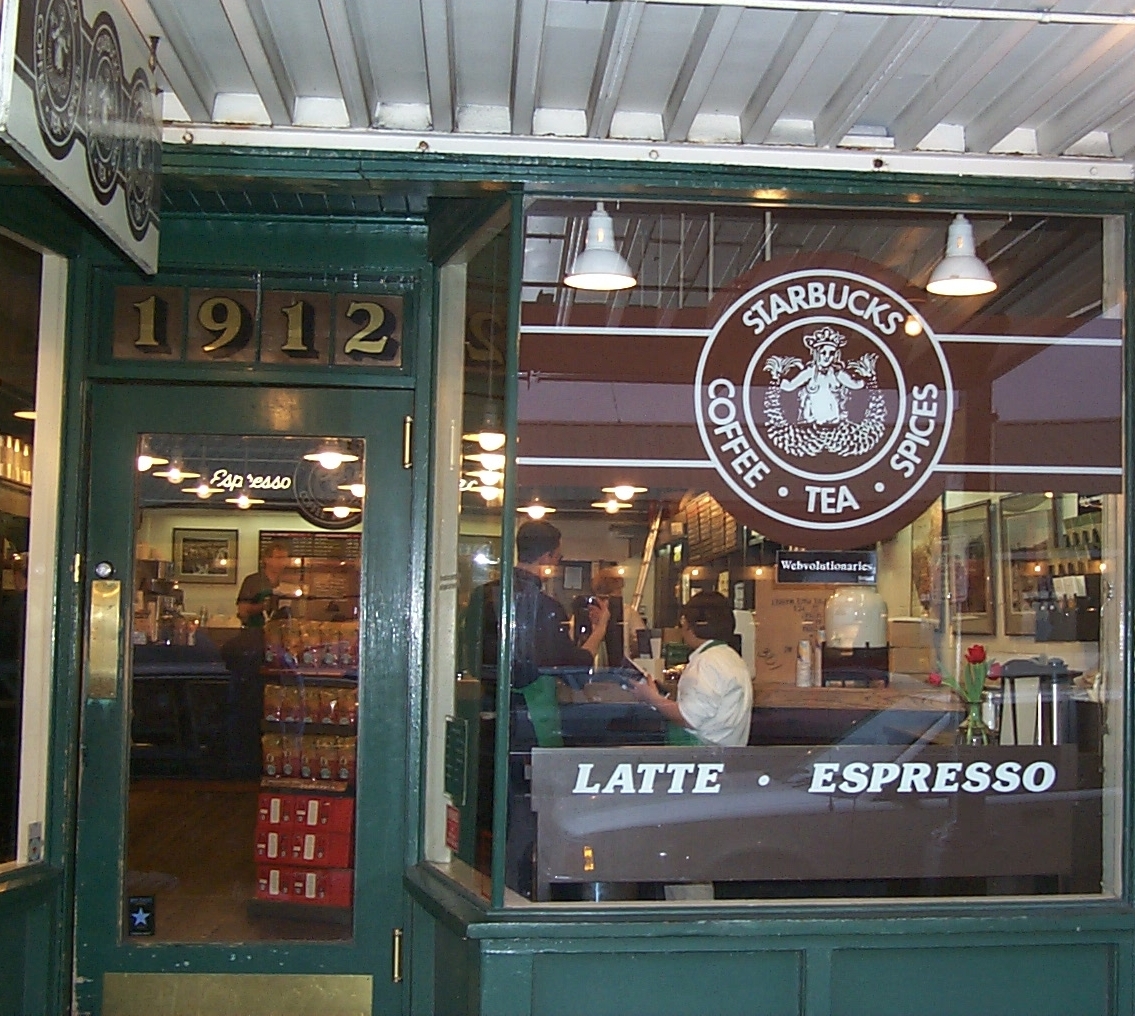


Original Starbucks Address and Store Front Window

Political Economy
The coffee capitalist, popularly recognized as ‘Starbucks’, was founded in 1971, opening its first location in Seattle’s Pike Place Market. Eleven years later Starbucks began providing coffee to fine restaurants and espresso bars. During this time, a man name Howard Schultz joined the Starbucks team as director of retail operations and marketing. Cognizant of the overwhelming success of the Starbucks in Seattle, Schultz attempted to convince the founders of the lone coffee house to test the concept of the ‘coffee bar’ in downtown Seattle. But in 1992, when Schultz and current C.E.O. Orin Smith went on the road to secure financial support from institutional and individual investors, they were met with much cynicism. Many scoffed at the idea that a small, Seattle-based coffeehouse concept could ever gain popular acceptance and did not think it reasonable that it could one day have even 500 stores. That was then. Today, Starbucks is one of the world’s most admired corporations (Interbrand named Starbucks as one of the 75 great global brands of the 21st Century). It is known around the world as the leading specialty coffee roaster, retailer and brand. The Company today has more than 5,500 stores in a total of 28 countries and is targeting 10,000 stores in 50 markets by the end of 2005.
In addition to its retail locations in North America, Europe, the Middle East and the Pacific Rim, Starbucks sells coffee and tea products through its specialty operations, including its online store at Starbucks.com. Additionally, Starbucks produces and sells bottled ‘Frappuccino’ coffee drink, ‘Double Shot’, and a line of super premium ice creams through its joint venture partnerships. The Company's other brands enhance the Starbucks Experience through best-of-class products: Tazo Tea Company offers a line of innovative premium teas, and Hear Music produces and distributes a line of exceptional compact discs. This is hardly your average coffee joint!
Starbucks creates urban wealth through a variety of mechanisms. First and foremost, Starbucks contributes (merely as a reliable coffee distributor) to an agglomerate economy in most cities, profiting from the ‘mixed-use’ characteristic typical of city streets; the type of street conducive to much foot traffic, and one hailed by Jane Jacobs, the renowned urban theorist and author of ‘The Life and Death of the Great American City’ . For instance, pedestrians walking through an area of residences, boutiques, offices, and perhaps restaurants, will more than likely buy their coffee from the nearest Starbucks. In this example, Starbucks functions and profits as a spin-off service (i.e. people were not solely in the area to buy a cup of coffee, but rather they were there for work or to shop). However, more recently, Starbucks’ role as a sacred place to relax and enjoy some premium ‘specialty’ coffee, just feet from the madness of those city streets, has become an extremely profitable feature in creating wealth. This themed space, based upon a leisure time that so many Americans worship, does well at attracting consumers in both the cities and suburbs; The ambiance inside the store, with its dim lighting and light jazz music, is enough to attract even the most ambivalent of coffee drinkers.